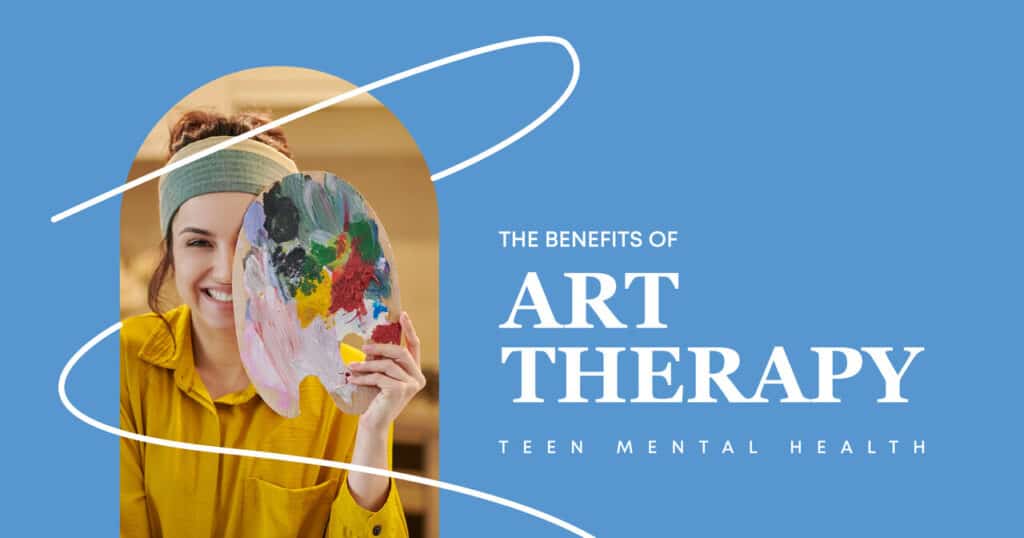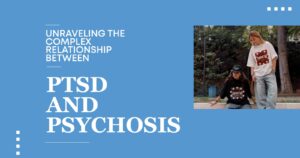Discovering the Magic of Art Therapy
Discovering the Magic of Art Therapy
Navigating the teenage journey can pose significant challenges for both teens and parents. While academic demands, social relationships, and personal development take center stage, mental well-being often gets overlooked. However, imagine a vibrant, interactive solution to bolster teen mental health – that’s where art therapy comes in. This therapeutic approach leverages the strength of creativity to empower teens to articulate their feelings, navigate complex emotions, and enhance their overall emotional well-being. Join us on an enlightening exploration of the remarkable therapeutic benefits of art therapy for fostering positive teen mental health.
What is Art Therapy?
Art therapy is a form of therapy that utilizes the creative process of making art to enhance an individual’s physical, psychological, and emotional health. It integrates conventional therapeutic methods with artistic expression to assist people in expressing themselves and gaining insights into their emotions and behaviors. Art therapy encompasses activities such as drawing, painting, sculpture, and various other art forms. The American Art Therapy Association defines it as a therapy that combines creative expression with psychological theory to foster healing and mental well-being. This art-making process has been shown to improve cognitive function and promote emotional regulation.
The Benefits of Art Therapy for Teens
Emotional Expression
Art therapy offers a safe space for teenagers to express their emotions. Many teens find it difficult to verbalize their feelings, and art provides an alternative creative outlet for emotional exploration. Through art therapy sessions, teens can explore and communicate difficult emotions such as anger, sadness, and anxiety. Art-making activities often help teens process negative emotions and develop emotional resilience. This therapeutic process is essential for addressing mental health conditions and promoting overall emotional well-being.
Stress Relief
Creating art can be incredibly calming. Engaging in a creative activity helps teens escape their worries and be present. This mindfulness practice can significantly reduce stress and promote relaxation. The therapeutic benefits of art therapy include reducing feelings of anxiety, anxiety symptoms, and depressive symptoms. Studies published in the American Journal of Public Health highlight the effectiveness of art therapy in managing mental health concerns.
Boosting Self-Esteem
Art therapy boosts self-esteem by fostering a sense of accomplishment. Completing an art project can instill confidence and pride in teens, and positive feedback from art therapists and peers amplifies this effect. Artistic expression enables teens to experience positive life experiences that enhance their self-worth. This sense of achievement is critical for teens struggling with mental health challenges.
Enhancing Problem-Solving Skills
The creative process incorporated in art therapy helps teenagers think critically and solve problems. Whether deciding how to convey an emotion through color or figuring out the best way to create a sculpture, these activities improve cognitive abilities and promote innovative thinking. The creative process enhances cognitive function and encourages a deeper understanding of one’s emotions. This development of art therapy techniques is crucial for fostering problem-solving abilities.
Improving Social Skills
Many art therapy sessions occur in group settings, providing teenagers with an excellent opportunity to interact with their peers. This environment fosters social connections, improves social skills, and helps build a sense of community. Social interactions during therapeutic activities promote communication skills and build social skills. These sessions also involve social workers who facilitate community settings for effective therapy.
How Art Therapy Works
The Role of the Art Therapist
Art therapists are trained professionals who help teenagers through the art-making process. They interpret the artwork and facilitate discussions, leading to deeper insights. The therapist’s role is crucial in creating a therapeutic alliance where teenagers feel more confident and comfortable expressing themselves. Art therapy interventions often involve collaboration with other mental health professionals to provide comprehensive care.
Types of Art Therapy Activities
- Drawing and Painting: These fundamental art techniques are great for expressing emotions and exploring inner thoughts.
- Sculpture: Working with materials like clay and other art materials can be a tactile way to process emotions.
- Collage: Creating collages, such as an anger collage, can help teens piece together different aspects of their lives and thoughts.
- Digital Art Therapy: With the rise of technology, digital art therapy has become a popular option, especially appealing to tech-savvy teens.
- Music Therapy: Alongside art therapy, music therapy also addresses mental health issues.
The Therapeutic Process
Art therapy exercises usually start with discussing the teen’s current feelings or issues. Then, the therapist leads the teen in a creative activity tailored to their needs. After the art-making process, the therapist and teen discuss the artwork and explore its meaning. This therapeutic approach helps teens gain insights into their emotional responses and develop coping strategies.
Who Can Benefit from Art Therapy?
Teens with Anxiety and Depression
Art therapy can be especially beneficial for teenagers struggling with mental health conditions like anxiety and depression. The creative outlet helps them articulate emotions they may find challenging to verbalize and redirects their focus from their concerns. This form of expression can significantly reduce feelings of anxiety and improve mental health.
Teens with Behavioral Issues
Art therapy provides a healthy outlet for teens with behavioral issues to express their energy and emotions, aiding in developing self-control. It complements behavioral therapy by offering a positive outlet. The therapeutic practices involved in art therapy can help manage behavioral issues and promote positive emotions.
Teens with Trauma
Art therapy is a powerful tool for adolescents who have undergone trauma. Creating art allows them to process their experiences in a non-verbal way, which can be less daunting than traditional talk therapy. It is beneficial for those with mental health challenges like post-traumatic stress disorder (PTSD) and other complex conditions.
Art Therapy vs. Traditional Therapy
Creative Expression vs. Verbal Expression
While traditional therapy heavily relies on verbal exchange, art therapy offers an alternative for those who struggle to articulate their feelings. This non-directive therapist behavior enables teens to express themselves through art forms.
Engaging and Enjoyable
Art therapy offers an engaging and enjoyable alternative to traditional treatment. The creative process transforms therapy into a fun and rewarding experience, making it a positive and enriching activity.
Holistic Approach
Art therapy takes a holistic approach to mental health by addressing emotional, cognitive, and social needs. It integrates various art forms and holistic approaches to promote overall health.
How to Get Started with Art Therapy
Finding a Qualified Art Therapist
Connecting with a skilled therapist is crucial when exploring art therapy. Seek out professionals with the right qualifications and a background in helping teens through artistic expression. Degree in art therapy and Art Therapy Credentials Board certification are important credentials to look for. These qualifications ensure the therapist meets professional standards.
Setting Goals
Discussing your goals with the therapist before beginning art therapy is essential. Establishing clear objectives will help guide the sessions and ensure the treatment meets your needs. Goal of art therapy should align with the teen’s specific mental health concerns. Setting clear clinical internship goals is crucial for achieving desired outcomes.
Creating a Comfortable Space
Ensure that the therapy space is comfortable and conducive to creativity. A safe and welcoming environment is essential for effective art therapy. Art studios and other community settings can provide ideal spaces for therapy. These settings enhance the aesthetic dimensions and foster visual representation.
FAQs
Q: What is the primary goal of art therapy?
A: The main goal of art therapy is to use the creative process to help individuals express emotions, gain insights, and improve mental health.
Q: Is art therapy suitable for all teens?
A: While art therapy can benefit many teens, it may not suit everyone. It’s essential to consult with a qualified art therapist to determine if it fits.
Q: How long does an art therapy program last?
A: The duration of art therapy programs can vary. Some may be short-term, lasting a few weeks, while others might extend over several months.
Q: Can art therapy be combined with other forms of treatment?
A: Yes, art therapy is often used in conjunction with traditional therapy methods, such as cognitive-behavioral therapy (CBT) or medication, to provide a proper treatment plan.
Conclusion
Art therapy offers a unique and effective method for nurturing teen mental health. Blending creative expression with therapeutic strategies, it creates a nurturing environment for adolescents to explore their feelings, alleviate stress, and cultivate self-worth. Art therapy exercises hold the potential to profoundly impact a teen’s mental well-being, providing a valuable tool for emotional growth and resilience
Empower Teen Mental Health with Art Therapy
If you or a loved one is considering art therapy, don’t hesitate to seek professional help. The proper support and a personalized approach can significantly impact your mental health journey.





